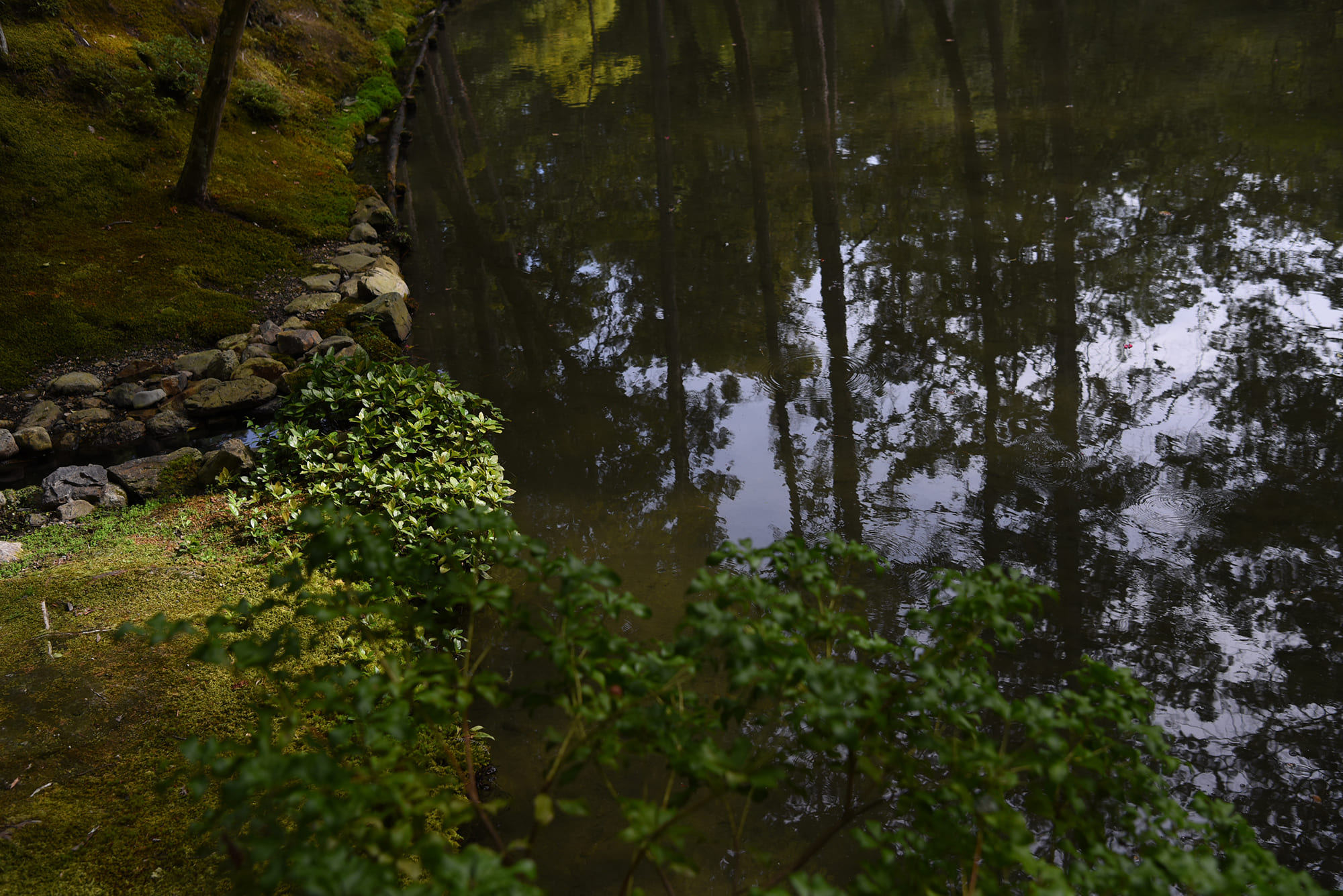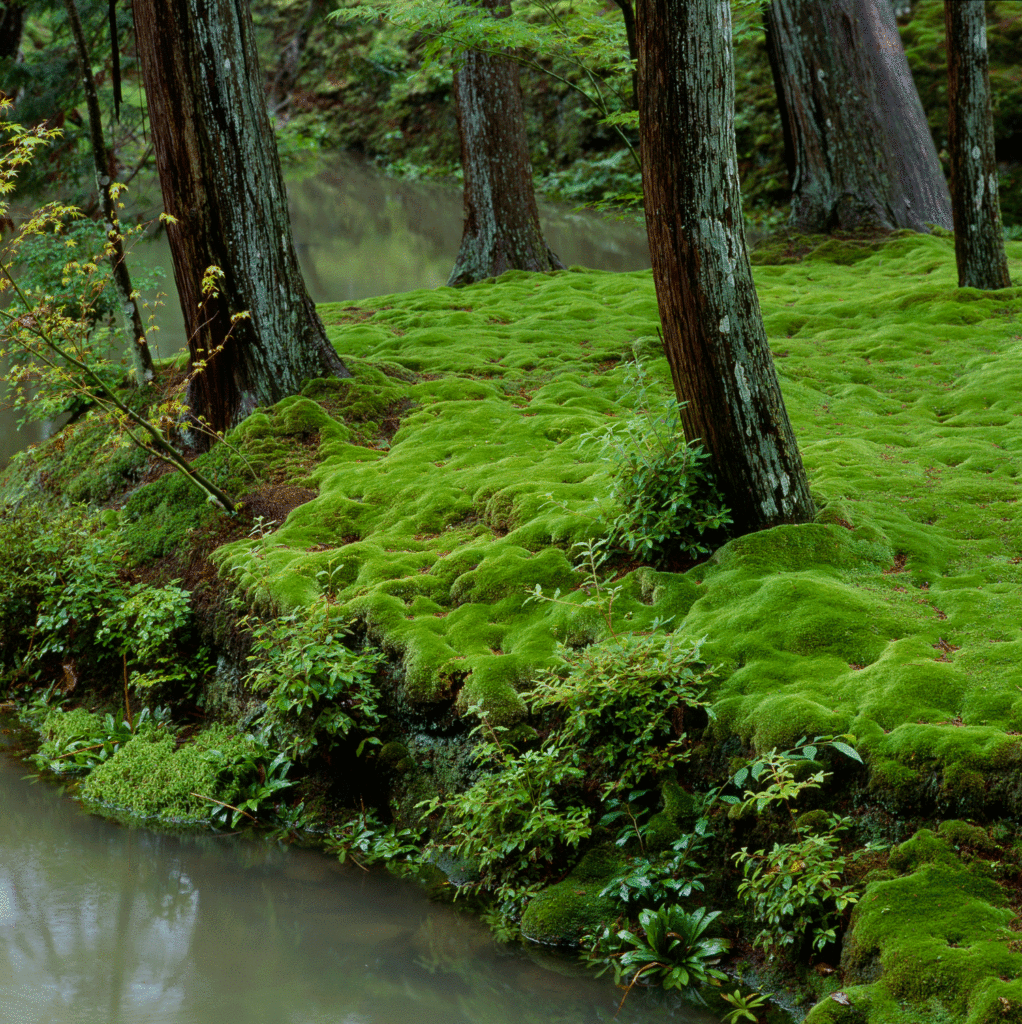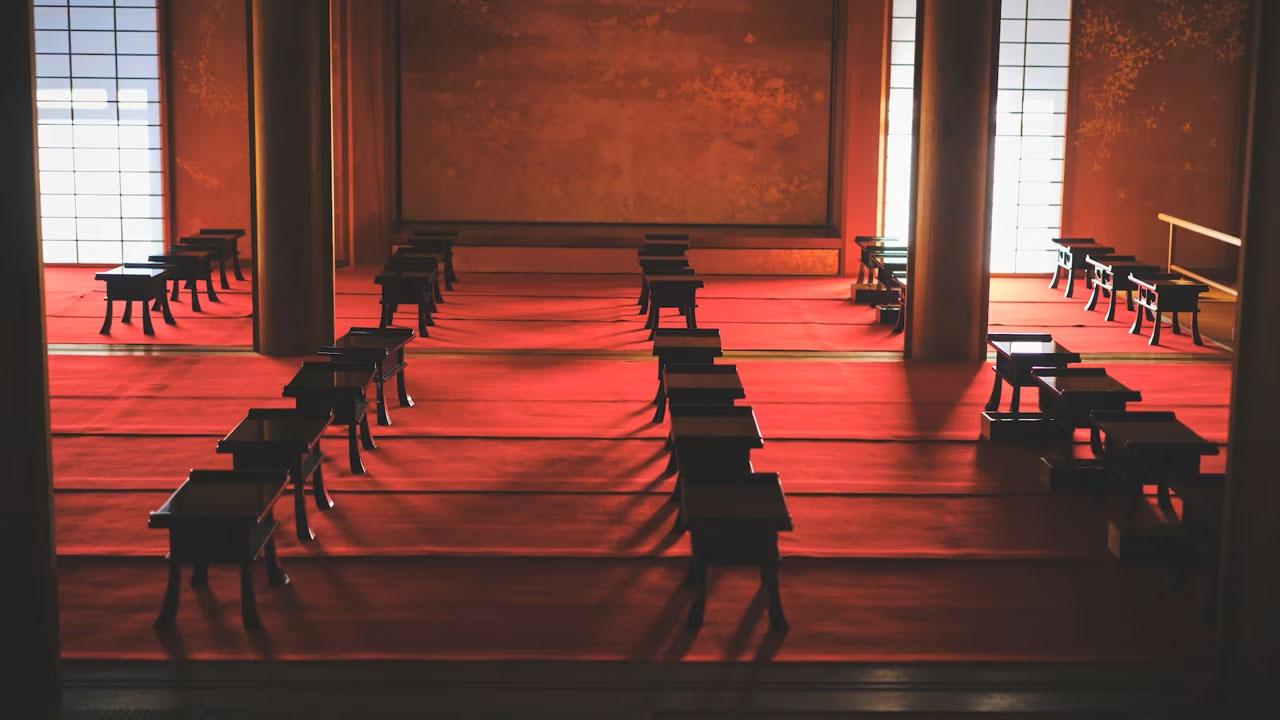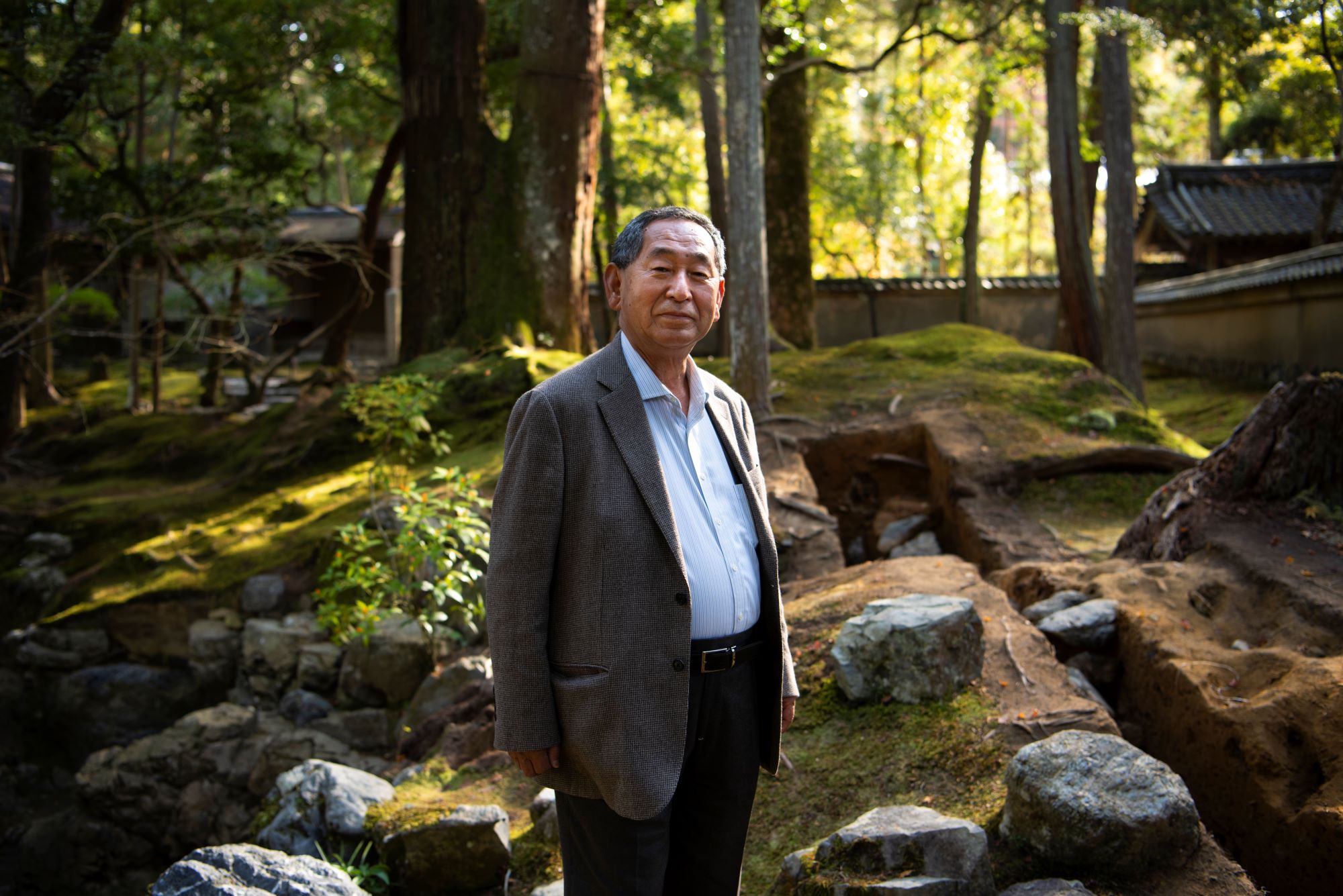2025.7.20
Winds of Gold—A Hundred Views of Saihoji Vol. 15
Peter MacMillan / a translator, scholar, poet
In this series of essays on Saihoji the renowned translator of Japanese poetry and poet Peter MacMillan records his impressions of and reflections on his visits to the garden throughout the four seasons. We hope that through these essays you the readers and fans of Saihoji can feel as if you are also present in the magical garden even when you cannot visit us.
Whether it be Yellow, Whether it be Green….
Today it is the middle of summer and everywhere is hot and uncomfortable. In recent years the summer season is almost five months from May to the end of October. It is very hard to maintain the condition of gardens in Kyoto in these extreme conditions. And that is also true for Saihoji where the gardeners who put in all their efforts to maintain the garden in good condition throughout the year.
Recently, I heard that some visitors to Saihoji in the summer expressed their disappointment to see the moss because it was not as green as they had imagined it would be. But I feel that if they understood more about moss, they would not be disappointed.
Mosses are a unique group of plants that have adapted to survive the heat of summer. Instead of having true roots, stems, or leaves, they have simple, leaf-like structures called phylloids that are used for photosynthesis and for reproduction. Unlike other plants, mosses do not have ways of transporting water and water nutrients throughout the plant.
They have developed ways to survive drought, intense heat and other extreme weather conditions and one of these ways is through a process called dormancy. Dormancy is a state in which the mosses reduce their metabolic activity especially during summer. Both rising temperatures and decreasing humidly can cause the mosses to stop growing and enter this dormant state. Doing so allows them to conserve energy and survive until the weather conditions become conductive again.
There are a few different ways that mosses enter dormancy during the summer. One of the most common is through desiccation, which means to lose water or dry out. When temperatures rise and humidity decreases, mosses lose water through their leaves. This causes the mosses to shrink and become less green, a sign that the moss is entering into a dormant state. Another cause of dormancy can be caused by responding to longer daylight. Both cases make the mosses look shrunken and yellowish, which is the cause of the visitors’ disappointment.
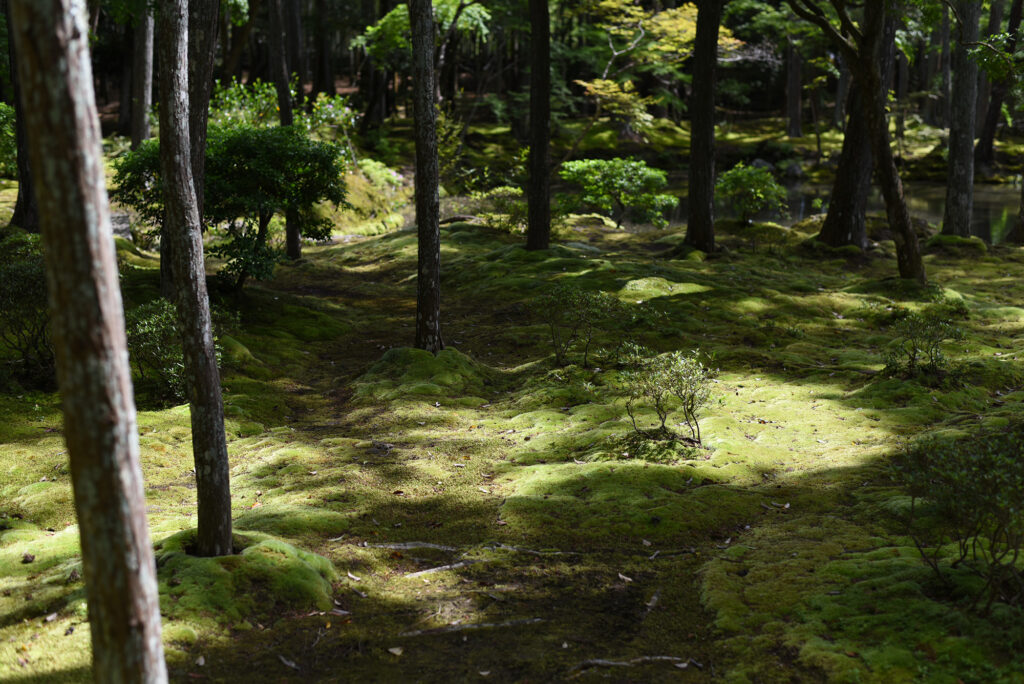
When weather conditions become more temperate, mosses will come out of their dormant state and start growing again. For this to happen the temperatures must cool down and humidity increase, or it can occur when days become shorter, and moss responds to changes in daily sunshine. Understanding that dormancy is essential for moss at certain times of the year is one of the keys to admiring moss and helping in the protection and preservation of these lovely plants.
If we look at the garden from our own point of view, we may just look for immediate gratification and some kind of compensation for all the money and time we spent to go there. But if we look at the garden from the mosses point of view, we will admire it so much for its amazing ability to adapt and survive in the most challenging conditions. And we will realize that the moss is not something separate from everything else but part of a complex natural world and its state of being tells us many things about the condition of the environment around us at each moment.
The cause of our disappointment thus lay in ourselves because if we had properly checked, we would have already known that dormancy is natural for moss in summer, and we will know that if we want to see green moss, we can choose a different time of year. Moreover, we will come to admire the moss in a different way, as a sensitive survivor and realize how clever it is to turn yellow.
But most of us will come to understand that moss is always beautiful, whether it be yellow, whether it be green. And the way we look at moss is a paradigm for the way in which we look at so many things in our lives. So let’s look at the world anew, and if everything in nature still looks ugly, then look again. And if all of nature starts to look beautiful then you will know you are looking in the right way.
Peter MacMillan
Peter MacMillan is a prize-winning translator, scholar, poet, and President of The Moon is a Boat Co., Ltd.
His translation, One Hundred Poets, One Poem Each (Hyakunin Isshu), was published in 2008, winning prizes in both Japan and the United States. After that, he completed an English translation of The Tales of Ise (Ise Monogatari), which was published by Penguin in 2016. He has also published a collection of poetry entitled Admiring Fields.
Awards:
Recipient of the Donald Keene Center Special Prize for the Translation of Japanese Literature
Recipient of the 44th Special Cultural Translation Prize from the Japan Society of Translators
Nominated for the PEN Award for Poetry Translation for the English translation of The Tale of Ise (Ise no Monogatari)



